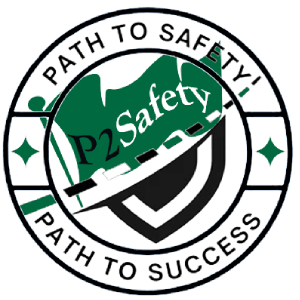CRSP 25 Flashcards

1. Hazards identification techniques - Observation
Observation of work being done. An act or instance of noticing or perceiving An act or instance of regarding attentively or watching The faculty or habit of observing or noticing The information or record secured by such an act

2. Task Analysis
Identify and analyze the individual steps within a particular task. A task analysis is simply a list of logically ordered component behaviors in any given task

3. “4 Ps” structure
1. Premises (Access/escape, Housekeeping, Working environment)
2. Plant and substances (Machinery guarding, local exhaust ventilation, and Use/storage/separation of materials/chemicals)
3. Procedures (Permits-to-work., Use of PPEs, Procedures & Protocols followed)
4. People (Health surveillance, People’s behavior, Appropriate authorized person)

4. Checklists
Cover key issues to be monitored. A checklist is a tool that project managers use to stay organized. Checklists can help project managers keep track of project tasks, requirements, goals, and deadlines.

5. Employee Input
Involve employees with relevant experience and knowledge as they are likely to have the best understanding of the hazards; involvement also increases ‘ownership’ of the assessment and hopefully compliance with any control measures identified.

6. Hazards identification techniques - Incident Reports
Each company should maintain its own records of all accidents that have occurred.

7. Hazard and Operability Study (HAZOP)
A hazard and operability study ( HAZOP ) is a structured and systematic examination of a complex plan or operation in order to identify and evaluate problems that may represent risks to personnel or equipment. The intention of performing a HAZOP is to review the design to pick up design and engineering issues that may otherwise not have been found.

8. Failure mode and effects analysis (FMEA)
Failure mode and effects analysis ( FMEA ; often written with "failure modes" in plural) is the process of reviewing as many components, assemblies, and subsystems as possible to identify potential failure modes in a system and their causes and effects.

9. Fault tree analysis (FTA)
Fault Tree Analysis is a graphic failure analysis tool used to deduct causes of undesired results and failures at the system level.

10. Key Steps in a Risk Assessment
Step 1: Identify the hazards.
Step 2: Decide who might be harmed and how.
Step 3: Evaluate the risks and decide on precautions.
Step 4: Record your findings and implement them.
Step 5: Review your assessment and update if necessary.

11. Risk Assessment - Quantitative
A measurement of magnitude is involved, e.g. there were four fatalities due to falls from a height over a 12-month period at Business X; the airborne concentration of formaldehyde in a workplace was measured as 13ppm.

12. Risk Assessment - Semi-Quantitative
Semi-quantitative risk assessments may also use a simple matrix to combine estimates of likelihood and consequence in order to place risks in rank order.

13. Acceptability/Tolerability of Risk
There are criteria by which a society decides which risks it is prepared to expect workers and members of the public to live with, and those it is not. Risks may be classified into three categories:

14. Abuse, aggression, or violence incident
Abuse, aggression, or violence is defined as ‘an incident in which employees feel they have been verbally abused, threatened or attacked in circumstances relating to their duties either in or out of work’. Employees should report incidents involving race, gender or gender identity, religion or belief, disability, sexuality, and age in line with the requirements of the Council’s Dignity at Work Policy.

15. People at the risk of violence
Those at increased risk are likely to be employees who:
• handle or collect money or valuables
• give advice or training
• work alone or away from a workplace
• carry out enforcement duties or inspections
• have contact with service users.

16. Aggression
Aggression has potentially damaging effect on an employee’s well-being of all categories of violence - actual physical attack, the threat of violence, and verbal abuse.

17. Bullying and harassment Definition
Bullying is usually seen as acts or verbal comments that could psychologically or 'mentally' hurt or isolate a person in the workplace. Sometimes, bullying can involve negative physical contact as well. Bullying usually involves repeated incidents or a pattern of behavior that is intended to intimidate, offend, degrade or humiliate a particular person or group of people. It has also been described as the assertion of power through aggression

18. Risk Assessment - Qualitative
No actual measurement is used. It involves describing the qualities, e.g. the airborne concentration was high or serious; the injury sustained was minor.

19. Factors Affecting Probability and Severity of Risk
The likelihood or probability of the event occurring; and the consequence or harm realized if the event takes place. This is usually expressed as: Risk = Likelihood (or Probability) × Consequence (or Harm)

20. Tolerable - Risks
Tolerable - Risks that fall between the acceptable and unacceptable. Tolerability does not mean acceptable but means that society is prepared to endure such risks because of the benefits they give and because further risk reduction is grossly out of proportion in terms of time, cost, etc.

21. Workplace violence and aggression
Workplace violence and aggression is when a person is abused, threatened or assaulted at the workplace or while they’re working. It can cause both physical and psychological harm, making it a risk to health and safety.

22. types of violence
All types of violence are unacceptable. This includes:
Physical attack - whether the visible injury occurs or not
Animal attack - when an animal is used as a threat
Verbal abuse - when an employee feels threatened or intimidated and the abuse is personally directed. This also includes cyber-aggression through texts, email messages, or social networking sites
Attack or damage to property or belongings of the employee
Any work-related incident involving an employee, or their family, happens away from the workplace.

23. Bullying and harassment Psychosomatic symptoms
Psychosomatic symptoms such as:
• Stomach pains.
• Headaches.
• Panic or anxiety, especially about going to work.
• Family tension and stress.
• Inability to concentrate.
• Low morale and productivity.

24. People who are the targets of bullying
People who are the targets of bullying may experience a range of effects. These reactions include:
• Shock.
• Anger.
• Feelings of frustration and/or helplessness.
• Increased sense of vulnerability.
• Loss of confidence.
• Physical symptoms such as:
• Inability to sleep.
• Loss of appetite.

25. Bullying affects
Bullying affects the overall "health" of an organization. An "unhealthy" workplace can have many effects. In general, these effects include:
• Increased absenteeism.
• Increased turnover.
• Increased stress.
• Increased costs for employee assistance programs (EAPs), recruitment, etc.
• Increased risk for incidents.
• Decreased productivity and motivation.
• Decreased morale.
• Reduced corporate image and customer confidence.
• Poor customer service




